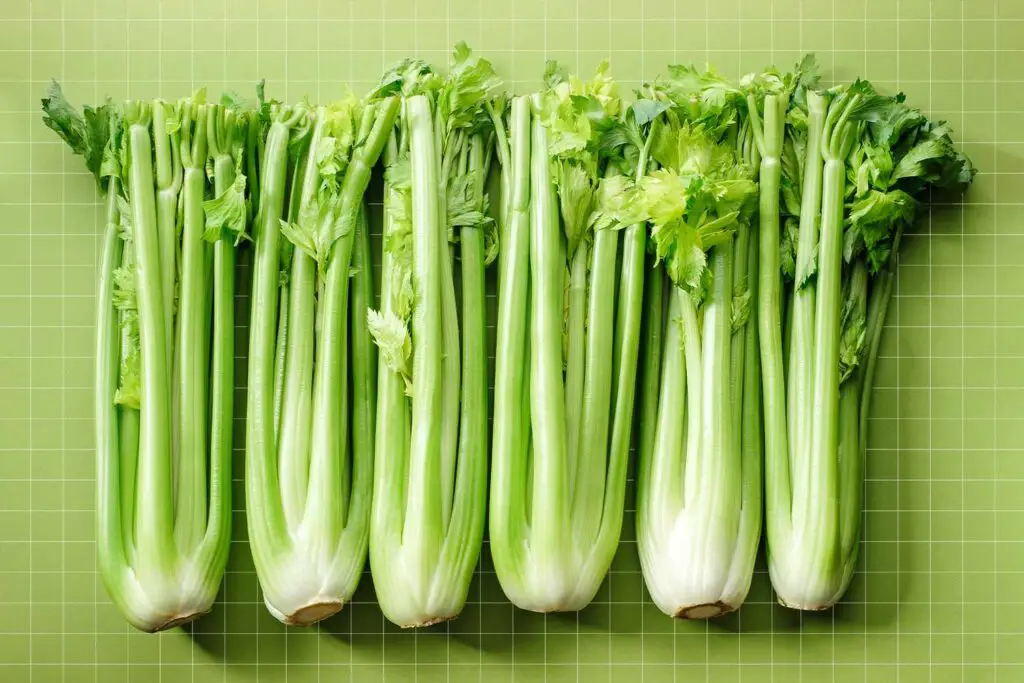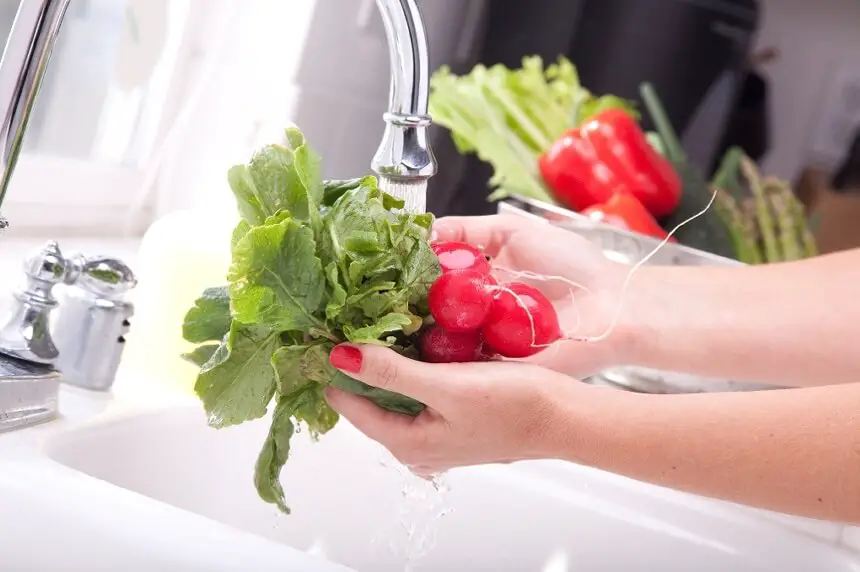
A balanced diet is crucial for their overall health and well-being. While meat is a staple in a boxer’s diet, incorporating vegetables can offer additional nutritional benefits. In this comprehensive guide, we will explore the question, “What vegetables can boxer dogs eat?” We’ll discuss the benefits of adding vegetables to their diet, highlight safe and beneficial options, and provide essential tips for feeding vegetables to your furry friend.
The Benefits of Vegetables for Boxer Dogs
Boxer dogs, known for their active and energetic nature, require a balanced diet to support their overall health and well-being. While high-quality animal proteins are essential for their muscle development, incorporating vegetables into their diet offers a range of benefits.
Nutritional Powerhouses: Vegetables are packed with vitamins, minerals, and antioxidants that contribute to a boxer’s overall health. They provide essential nutrients like vitamin A, vitamin C, and potassium, which support immune function, promote healthy skin and coat, and aid in proper muscle and nerve function.
Fiber and Digestive Health: Vegetables are a great source of dietary fiber, which helps maintain healthy digestion and regular bowel movements. Adequate fiber intake can prevent constipation, regulate blood sugar levels, and promote a healthy weight.
Hydration and Detoxification: Many vegetables have high water content, contributing to hydration in dogs. Additionally, certain vegetables like cucumbers and celery act as natural diuretics, aiding in detoxification and flushing out toxins from the body.
Oral Health: Crunchy vegetables like carrots and celery can help promote good dental hygiene in boxers. Chewing on these firm vegetables helps reduce plaque buildup, massages gums, and freshens breath.
Weight Management: Incorporating low-calorie vegetables into a boxer’s diet can help maintain a healthy weight. Vegetables provide bulk to their meals, promoting a feeling of fullness without adding excessive calories.
Remember to introduce vegetables gradually and in moderation, observing your boxer’s response. Consult with your veterinarian to ensure the specific dietary needs of your boxer are met. By including a variety of safe vegetables in their diet, you can provide your boxer with a well-rounded and nutritious meal plan that supports their overall health and vitality.

Leafy Green Vegetables
Leafy green vegetables are a valuable addition to a boxer dog’s diet due to their nutrient-rich profile and numerous health benefits. Here are some leafy green vegetables that are safe and beneficial for boxers:
Spinach: Spinach is packed with vitamins A, C, and K, as well as iron and folate. It supports eye health, strengthens the immune system, and promotes healthy blood clotting.
Kale: Kale is a nutritional powerhouse, rich in vitamins A, C, and K, as well as fiber and antioxidants. It supports cardiovascular health, aids in digestion, and contributes to healthy skin and coat.
Collard Greens: Collard greens are high in fiber, vitamins A, C, and K, and calcium. They promote bone health, aid in digestion, and contribute to overall immune support.
Romaine Lettuce: Romaine lettuce is a hydrating leafy green with vitamins A, C, and K. It supports digestive health, provides a refreshing crunch, and contributes to a well-balanced diet.
When offering leafy green vegetables to your boxer, ensure they are thoroughly washed and free from any pesticides or toxins. Introduce them gradually, monitoring your dog’s response. Remember to consult with your veterinarian regarding your boxer’s specific dietary needs and any potential allergies or sensitivities. Including a variety of leafy greens in their diet can provide essential nutrients and contribute to their overall well-being.
Cruciferous Vegetables
Cruciferous vegetables are a fantastic addition to a boxer dog’s diet, providing a range of health benefits. Here are some cruciferous vegetables that are safe and beneficial for boxers:
Broccoli: Broccoli is rich in vitamins C and K, fiber, and antioxidants. It supports a healthy immune system, aids in digestion, and promotes overall well-being.
Cauliflower: Cauliflower is packed with vitamins C and K, fiber, and folate. It supports brain health, aids in digestion, and contributes to a healthy coat.
Cabbage: Cabbage is high in fiber, vitamins C and K, and antioxidants. It promotes a healthy digestive system, supports the immune system, and provides anti-inflammatory benefits.
Brussels Sprouts: Brussels sprouts are a nutrient-dense vegetable, containing vitamins C and K, fiber, and antioxidants. They support bone health, aid in digestion, and contribute to healthy skin and coat.
When introducing cruciferous vegetables to your boxer’s diet, it’s important to cook them thoroughly to enhance digestibility. Start with small portions and observe your dog’s response. As always, consult with your veterinarian to ensure that cruciferous vegetables are suitable for your boxer’s specific dietary needs and any underlying health conditions. Including a variety of cruciferous vegetables can provide added nutrition and contribute to your boxer’s overall health and well-being.
Root Vegetables
Root vegetables are not only delicious but also offer various health benefits for boxer dogs. Here are some root vegetables that are safe and suitable for boxers:
Carrots: Carrots are rich in vitamins A, C, and K, as well as fiber. They promote good eyesight, support oral health, and contribute to a healthy immune system.
Sweet Potatoes: Sweet potatoes are packed with vitamins A, C, and B6, as well as fiber. They provide energy, support digestion, and offer antioxidant benefits.
Parsnips: Parsnips are high in fiber, vitamins C and K, and antioxidants. They promote a healthy heart, aid in digestion, and contribute to healthy skin and coat.
Turnips: Turnips are a good source of vitamins C and K, as well as fiber. They support a healthy metabolism, aid in digestion, and provide immune-boosting properties.
When incorporating root vegetables into your boxer’s diet, ensure that they are cooked thoroughly to enhance digestibility. Start with small amounts and observe your dog’s response. As always, consult with your veterinarian to determine the appropriate serving size and frequency of root vegetables based on your boxer’s individual needs and any underlying health conditions. Including a variety of root vegetables can add nutritional value to your boxer’s diet and contribute to their overall well-being
Colorful Vegetables
Colorful vegetables not only add vibrancy to your boxer’s diet but also provide essential nutrients. Here are some colorful vegetables that are safe for boxer dogs to enjoy:
Bell Peppers: Bell peppers come in different colors and are rich in vitamins A and C. They promote healthy skin, support the immune system, and provide antioxidant benefits.
Broccoli: Broccoli is packed with vitamins C and K, as well as fiber. It supports digestive health, promotes a strong immune system, and offers anti-inflammatory properties.
Zucchini: Zucchini is a low-calorie vegetable that is high in vitamins A and C, as well as potassium. It aids in digestion, supports hydration, and contributes to healthy skin and coat.
Cauliflower: Cauliflower is rich in vitamins C and K, as well as fiber. It provides antioxidant benefits, supports bone health, and aids in digestion.
When introducing colorful vegetables to your boxer’s diet, ensure they are cooked or lightly steamed to enhance digestibility. Remember to monitor your dog’s response and adjust serving sizes accordingly. As always, consult with your veterinarian to determine the appropriate portion sizes and frequency of colorful vegetables based on your boxer’s specific needs and health considerations. Including a variety of colorful vegetables can add nutritional diversity to your boxer’s meals and contribute to their overall health and well-bein
High-Fiber Vegetables
Including high-fiber vegetables in your boxer dog’s diet can offer several health benefits. Here are some high-fiber vegetables that are safe for boxer dogs to consume:
Green Beans: Green beans are low in calories and rich in fiber. They promote healthy digestion, contribute to weight management, and provide vitamins A, C, and K.
Brussels Sprouts: Brussels sprouts are packed with fiber, vitamins C and K, and antioxidants. They support digestive health, provide anti-inflammatory properties, and promote a strong immune system.
Peas: Peas are a good source of fiber, vitamins A, C, and K, and essential minerals. They aid in digestion, support heart health, and provide antioxidant benefits.
Carrots: Carrots are high in fiber, vitamins A and K, and beta-carotene. They promote healthy digestion, support eye health, and contribute to a strong immune system.
When including high-fiber vegetables in your boxer’s diet, it’s important to cook or lightly steam them for better digestibility. Monitor your dog’s response and adjust serving sizes accordingly. Remember to consult with your veterinarian to determine the appropriate portion sizes and frequency of high-fiber vegetables based on your boxer’s specific needs and health considerations. Incorporating high-fiber vegetables can help promote optimal digestion and overall well-being for your boxer.


Washing and Preparing Vegetables
Properly washing and preparing vegetables is essential to ensure your boxer dog’s safety and well-being. Follow these guidelines when handling vegetables for your dog:
Wash Thoroughly: Rinse vegetables under cold water to remove any dirt, debris, or pesticide residue. Scrubbing with a brush may be necessary for certain vegetables with rough surfaces.
Remove Outer Layers: Some vegetables, such as lettuce or cabbage, may have outer layers that are tough or contain more pesticides. Remove and discard these outer layers before serving.
Cut into Bite-Sized Pieces: Chop vegetables into small, manageable pieces appropriate for your dog’s size. This helps prevent choking and facilitates easier digestion.
Cook or Steam: While some vegetables can be fed raw, lightly cooking or steaming them can enhance digestibility and nutrient absorption for your boxer dog. Avoid using seasonings or additives that may be harmful to dogs.
Serve in Moderation: While vegetables offer many health benefits, they should be included as part of a balanced diet. Serve vegetables in moderation to prevent digestive upset or nutrient imbalances.
Remember to consult with your veterinarian about specific vegetable choices and any potential allergies or health conditions your boxer may have. By taking these steps to wash and prepare vegetables properly, you can ensure the safety and enjoyment of incorporating vegetables into your boxer dog’s diet.
Cooking Methods for Vegetables
When it comes to preparing vegetables for your boxer dog, there are several cooking methods you can employ to enhance their palatability and digestibility. Here are some popular cooking methods to consider:
Steaming: Steaming is a gentle cooking method that helps retain the nutritional value of vegetables. It softens the texture, making them easier to chew and digest for your boxer. Steamed vegetables can be served as standalone snacks or mixed with other ingredients in their meals.
Boiling: Boiling vegetables in water until they become tender is another option. However, be cautious not to overcook them, as this can result in nutrient loss. Boxer dogs may enjoy boiled vegetables mixed with their regular food or as a side dish.
Roasting: Roasting vegetables in the oven can enhance their flavors and bring out their natural sweetness. Toss them with a small amount of olive oil and roast until they become caramelized and tender. Roasted vegetables can be served as a tasty treat or mixed with other ingredients in your boxer’s meals.
Grilling: Grilling vegetables adds a smoky and charred flavor that can be enticing to your boxer. Brush the vegetables with a little olive oil to prevent sticking and grill them until they are tender. Remember to cut them into appropriate sizes for easy chewing and remove any charred parts before serving.
Mashing: For certain vegetables like sweet potatoes or pumpkin, mashing can be a great way to add variety to your boxer’s meals. Simply cook the vegetables until soft, then mash them into a smooth consistency. You can serve mashed vegetables as a side dish or mix them with other ingredients to create a flavorful meal.
Experiment with different cooking methods to find out which ones your boxer enjoys the most. Remember to avoid adding any seasonings, spices, or sauces that may be harmful to dogs. Keep the cooking process simple and focus on retaining the natural goodness of the vegetables
Portion Sizes and Frequency of Vegetable Intake
When incorporating vegetables into your boxer dog’s diet, it’s essential to consider portion sizes and the frequency of their intake. Here are some guidelines to help you provide the right amount of vegetables:
Portion Sizes: The portion size of vegetables will depend on your boxer’s age, weight, and overall dietary needs. As a general guideline, vegetables should make up around 10-20% of your dog’s total daily food intake. It’s important to maintain a balanced diet that includes appropriate amounts of proteins, carbohydrates, and fats alongside the vegetables.
Introduce Gradually: If your boxer is not accustomed to eating vegetables, it’s best to introduce them gradually. Start by adding small amounts of cooked and finely chopped vegetables to their regular meals. Monitor their response and adjust the portion size accordingly. This gradual introduction helps prevent digestive issues and allows your dog to adapt to the new food.
Variety and Rotation: Just like humans, dogs benefit from a varied diet. Include a variety of vegetables in your boxer’s meals to ensure they receive a range of nutrients. Rotate the types of vegetables you offer to provide a well-rounded nutritional profile.
Monitor Digestive Health: While vegetables are generally healthy for dogs, some may have more fiber content, which can lead to loose stools or digestive discomfort in some individuals. If you notice any digestive issues after introducing vegetables, adjust the portion size or try different types of vegetables that are better tolerated by your boxer.
Consult with a Veterinarian: Every dog is unique, and their dietary needs may vary. It’s always a good idea to consult with a veterinarian before making any significant changes to your boxer’s diet. They can provide personalized recommendations based on your dog’s specific requirements and health condition.
Remember to monitor your boxer’s overall health, weight, and energy levels when introducing vegetables into their diet. Adjust the portion sizes and frequency of vegetable intake as needed to maintain a balanced and nutritious diet for your furry friend.


Allergies and Sensitivities
While vegetables are generally considered safe and healthy for boxer dogs, it’s important to be aware of potential allergies or sensitivities that your dog may have. Here are some key points to consider:
Common Allergenic Vegetables: Some vegetables, although rare, may cause allergic reactions in certain dogs. Common allergenic vegetables include onions, garlic, and members of the nightshade family such as tomatoes and peppers. If your boxer shows signs of an allergic reaction like itching, skin rashes, or gastrointestinal upset after consuming these vegetables, it’s best to avoid them.
Individual Sensitivities: Dogs, like humans, can have individual sensitivities to certain foods. While uncommon, it’s possible for a boxer dog to have a sensitivity or intolerance to specific vegetables. If you notice any adverse reactions or digestive issues after feeding a particular vegetable, consult with your veterinarian for further guidance.
Elimination Diet: If you suspect that your boxer may have a vegetable allergy or sensitivity, your veterinarian may recommend an elimination diet. This involves temporarily removing all potential allergenic vegetables from your dog’s diet and reintroducing them one by one to identify the specific trigger. This process helps determine which vegetables are well-tolerated and safe for your boxer to consume.
Alternative Options: If your boxer has allergies or sensitivities to certain vegetables, there are plenty of alternative options available. Consult with your veterinarian to identify suitable vegetable substitutes that can provide similar nutritional benefits without triggering any adverse reactions.
Remember, each dog is unique, and their dietary needs may vary. If you suspect that your boxer may have allergies or sensitivities, it’s crucial to work closely with your veterinarian to identify and manage any potential issues. By understanding your dog’s specific requirements, you can provide a safe and nutritious vegetable-rich diet for your boxer.
Digestive Issues
While vegetables are generally healthy for boxer dogs, some may cause digestive issues in certain individuals. Here are some important points to consider regarding digestive issues and vegetable consumption:
Introduce Gradually: When introducing vegetables to your boxer’s diet, it’s important to do so gradually. Abruptly adding a large amount of vegetables to their diet can cause digestive upset. Start by offering small amounts and gradually increase over time to allow your dog’s digestive system to adjust.
Watch for Gas and Diarrhea: Some vegetables, such as broccoli, cauliflower, and cabbage, can cause gas and loose stools in dogs. If you notice these symptoms after your boxer consumes certain vegetables, it’s best to limit or avoid them. Monitor your dog’s response to different vegetables and adjust their diet accordingly.
Cooking and Steaming: Cooking or steaming vegetables can make them easier to digest for dogs. The heat helps break down the fibers, making them gentler on the digestive system. Consider lightly cooking vegetables before offering them to your boxer to minimize the risk of digestive issues.
Fiber Content: High-fiber vegetables, such as sweet potatoes and carrots, can promote healthy digestion in boxer dogs. However, excessive fiber intake can lead to loose stools or increased frequency of bowel movements. Moderation is key when incorporating high-fiber vegetables into your dog’s diet.
Consult with Your Veterinarian: If your boxer experiences persistent digestive issues after consuming vegetables or shows signs of discomfort, it’s important to consult with your veterinarian. They can evaluate your dog’s specific needs, assess any underlying digestive conditions, and provide appropriate dietary recommendations.
Remember, every dog is unique, and their digestive system may react differently to various vegetables. Pay attention to your boxer’s individual response and make adjustments as needed to ensure their digestive health.
Frequently Asked Questions (FAQs)
FAQ 1: Can boxers eat all types of vegetables? Yes, boxers can eat a variety of vegetables, but it’s important to choose dog-safe options and consider their individual preferences and digestive tolerance. Some vegetables may cause digestive issues in certain dogs, so it’s important to introduce them gradually and monitor their response.
FAQ 2: Are there any vegetables that boxers should avoid? While most vegetables are safe for boxers, some may cause digestive upset or allergic reactions. Common vegetables to avoid or limit include onions, garlic, mushrooms, and certain nightshade vegetables like tomatoes and peppers. It’s best to consult with your veterinarian for specific recommendations based on your dog’s health and dietary needs.
FAQ 3: Can boxers eat raw vegetables? Boxers can eat some raw vegetables, but it’s important to note that dogs may have a harder time digesting raw vegetables compared to cooked ones. Raw vegetables should be cut into small, manageable pieces and offered in moderation. Cooking or steaming vegetables can make them easier to digest for dogs.
FAQ 4: Can boxers eat vegetables as a main meal? While vegetables are a healthy addition to a boxer’s diet, they should not replace a balanced and complete meal. Boxers require a combination of protein, carbohydrates, fats, and other nutrients for optimal health. Vegetables should be considered as a supplement or part of a well-rounded meal plan.
FAQ 5: How do I introduce vegetables to my boxer’s diet? To introduce vegetables to your boxer’s diet, start by offering small amounts and gradually increase over time. Mix them with their regular food or incorporate them into homemade dog treats. Monitor your dog’s response, and if any digestive issues occur, adjust the amount or type of vegetables accordingly. It’s always a good idea to consult with your veterinarian before making significant changes to your dog’s diet.
Note: It’s essential to consult with your veterinarian before making any dietary changes or introducing new foods to ensure they are appropriate for your boxer’s specific needs and health condition.
